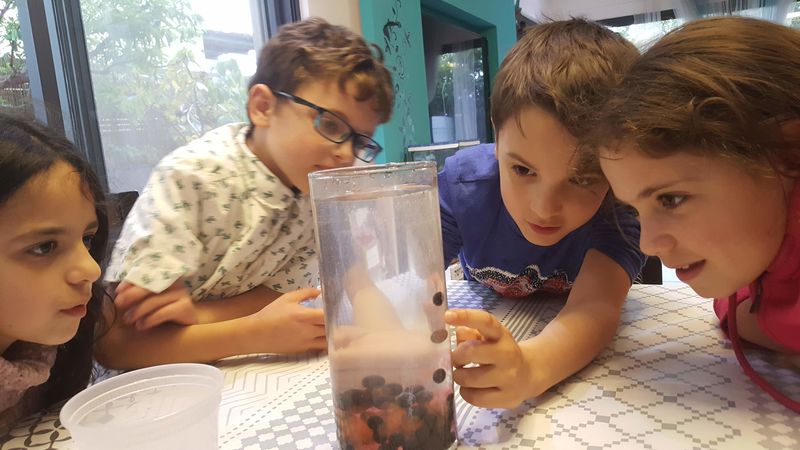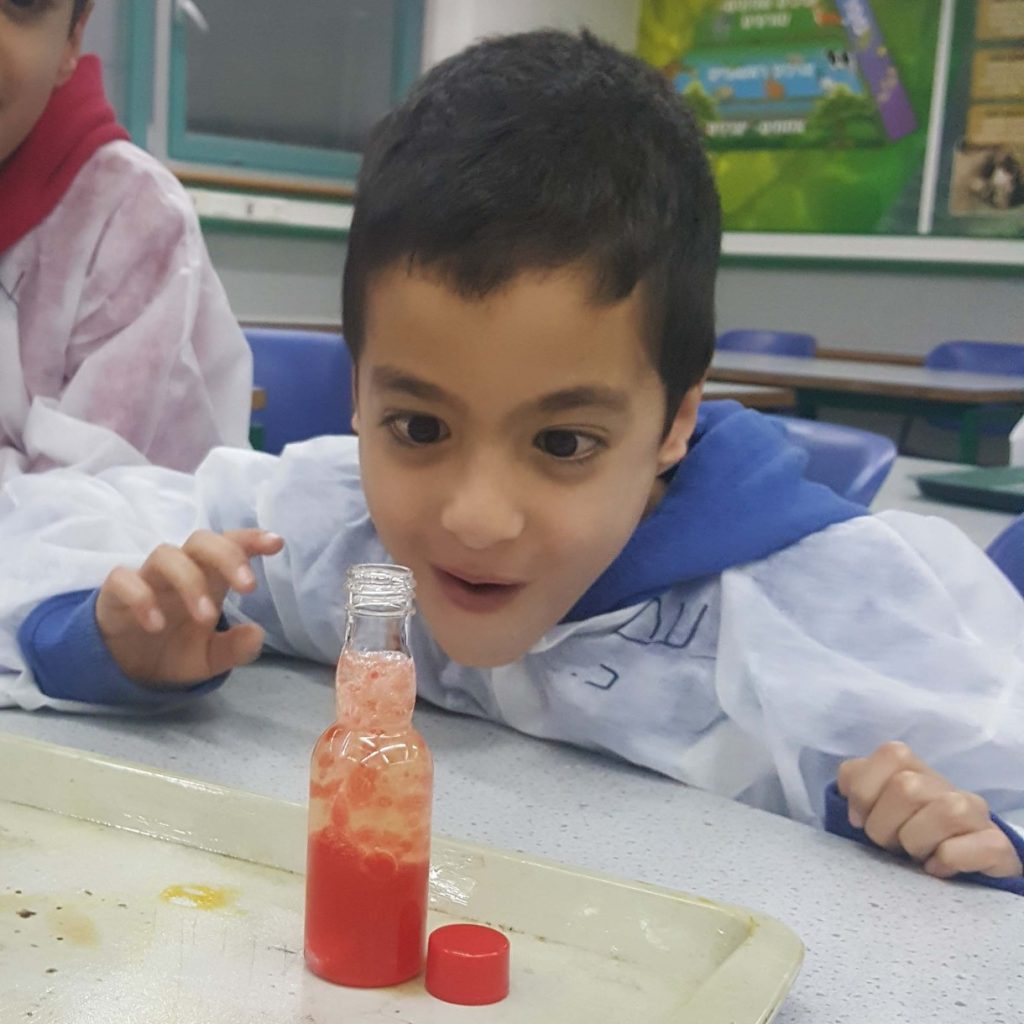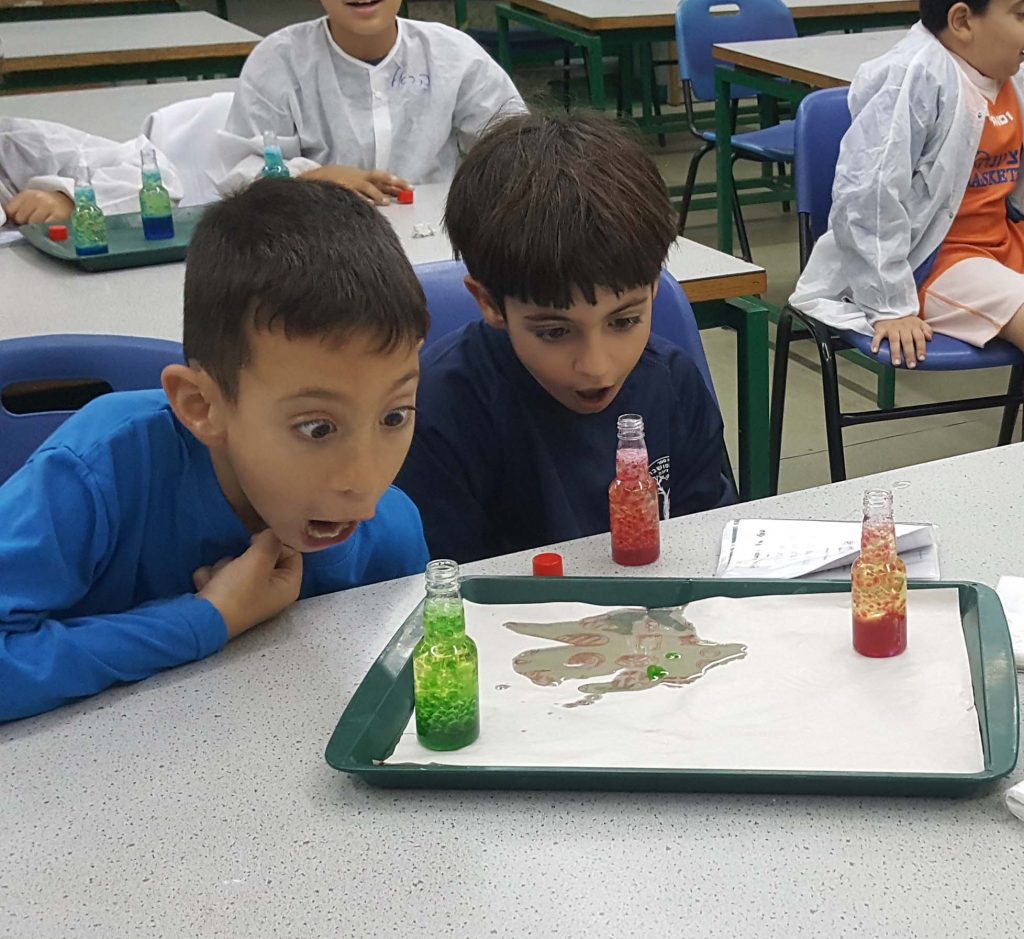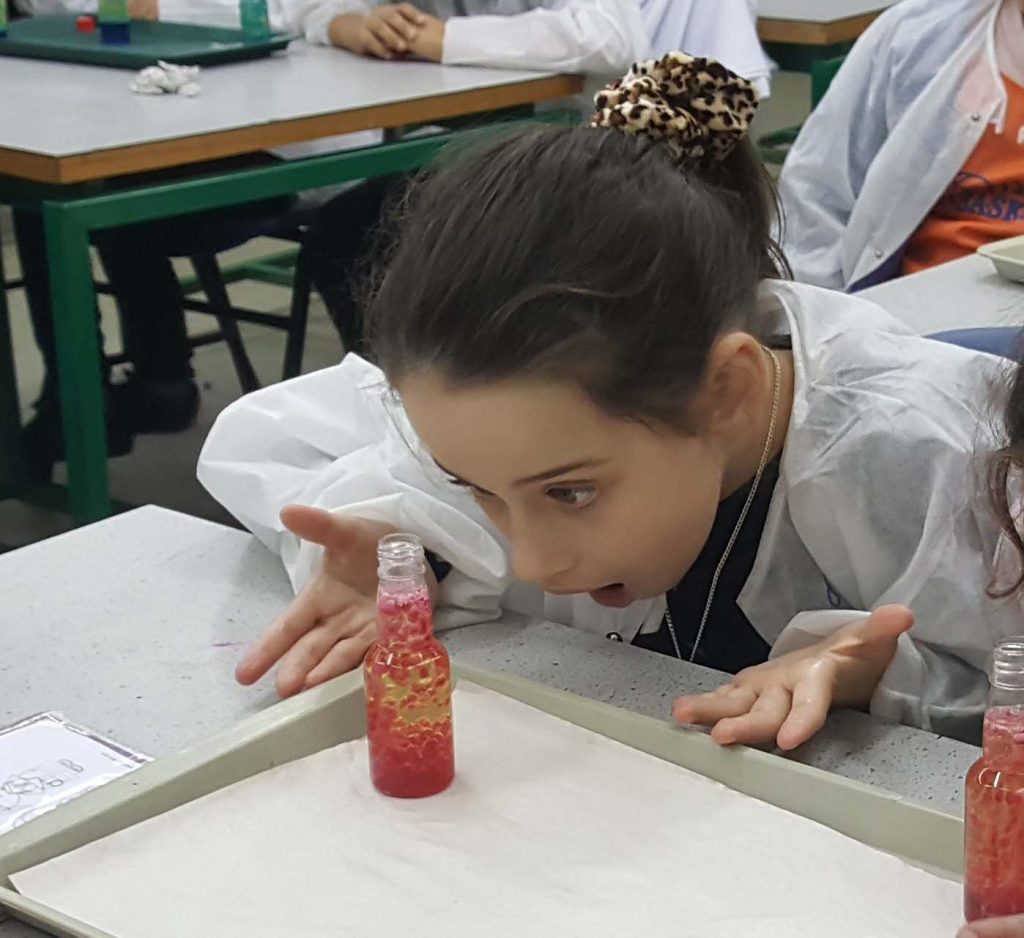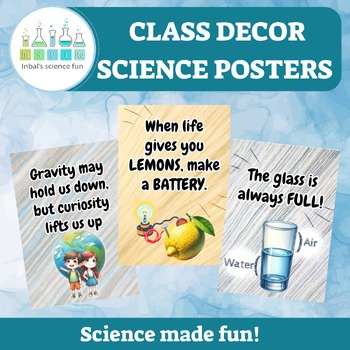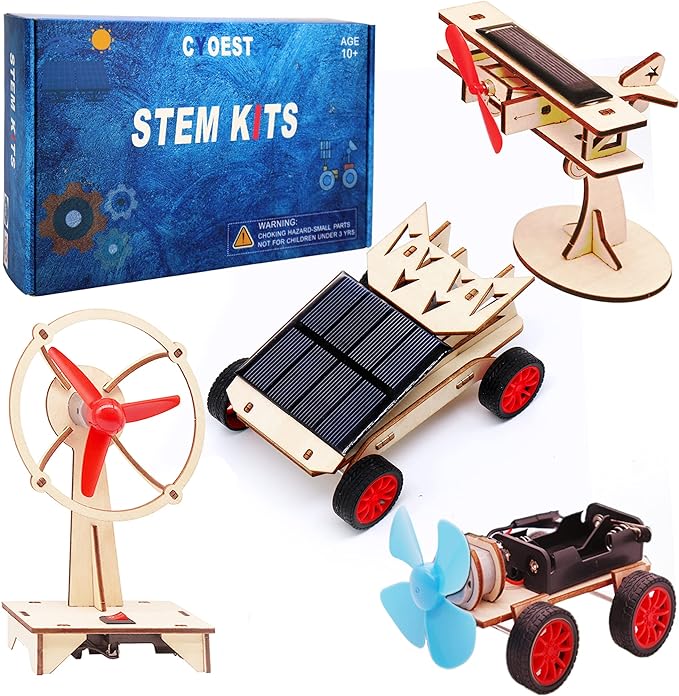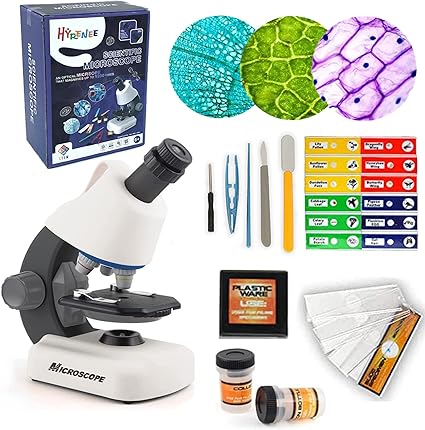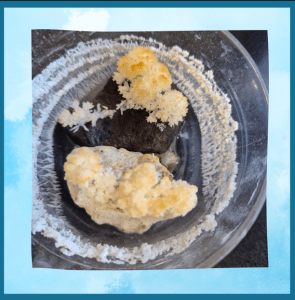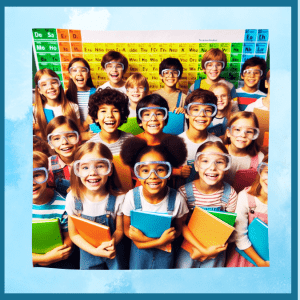Lava lamp experiment
This lava lamp experiment is one of my favorites. It is so easy and fun, and all kids love it!
Having my students conduct an experiment in class often leads to unexpected moments of pure wonder, and that’s precisely what happened when I introduced my students to the Lava Lamp Experiment. As an educator, there’s nothing quite like witnessing the spark of curiosity and excitement in young minds. Picture this: a classroom filled with eager faces, eyes fixed on their mesmerizing lava lamps, as colorful blobs of liquid gracefully danced up and down. The room buzzed with noise and laughter, and in that moment, I knew I was doing something right. This is exactly how I want my lessons to be. Its true, there was a lot of noise in the class. But it was “good” noise of students really enjoying science.
This experiment is more than just a lesson in fluid dynamics, density, and chemistry; it’s a testament to the power of hands-on learning and the magic of science.
Materials:
- a small Bottle
- oil
- warm water
- food coloring
- Alka seltzer or sweetener tablets
What to do?
- Fill a quarter of the bottle with warm water (the water should be warm not hot).
- Add food coloring. make sure the water gets a strong color. Darker colors work best.
- Fill the rest of the bottle with oil
- Add a few tablets of sweetener or half a tablet of Alka seltzer.
- Look at the bottle and see what happens.
- Additional tablets can be added for a stronger effect.
**Please note that the bottle stays open until all the tablets have dissolved!
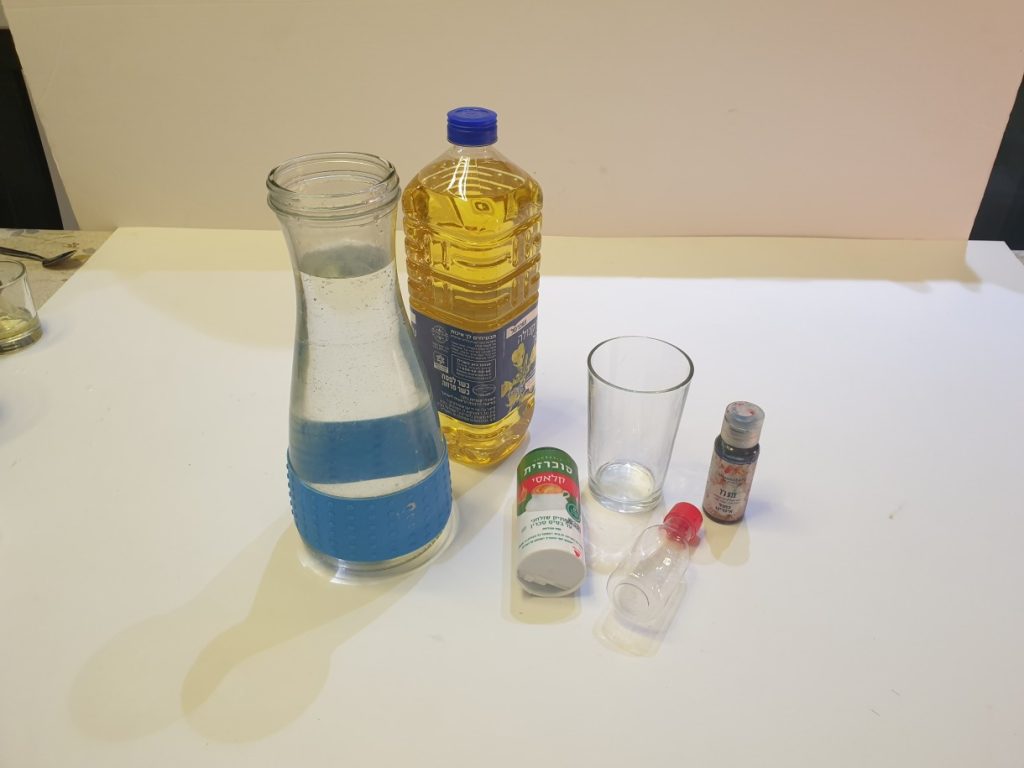
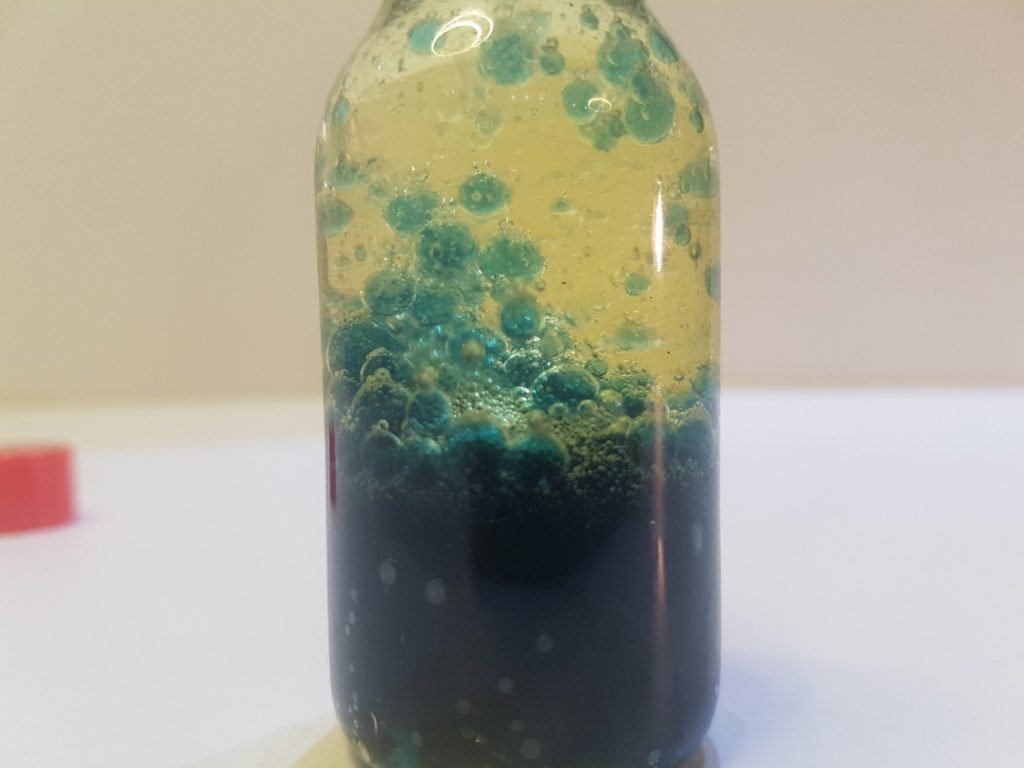
Why does this happen?
First you can see that when you pour oil on water the oil floats on top of the water. The reason for this is the fact that oil is less dense than water, which means there are more spaces between the molecules. Dense materials will sink to the bottom and less dense materials will float above them. Another experiment demonstrating density is the rain in a jar experiment
Second, we can see that oil and water do not mix. In nature there are two types of substances, those that dissolve in water and those that do not dissolve in water. Salt for example dissolves in water and you can mix the salt and water together. Oil does not dissolve in water and therefore it is impossible to mix oil with water and they always return to two separate layers.
Sweetener or Alka seltzer tablets: these tablets have a base and also a little acid in them. When you drop such a tablet into the warm water, it sinks and starts to dissolve. The acid and base in the tablet mix and a chemical reaction begins that emits carbon dioxide gas. The gas collects on the way up water that rises with it. As soon as the bubble that “carried” the water is released from the oil into the air, the dense water sinks back to the bottom of the bottle. This is how we get an impressive colorful and beautiful “lava lamp“.
*This post contains affiliate links.
If you liked this experiment, make sure you checkout my Explosions underwater experiment!
We’d love to showcase your creativity!
Share pictures of your experiments with us, and together, we can inspire young scientists everywhere!
